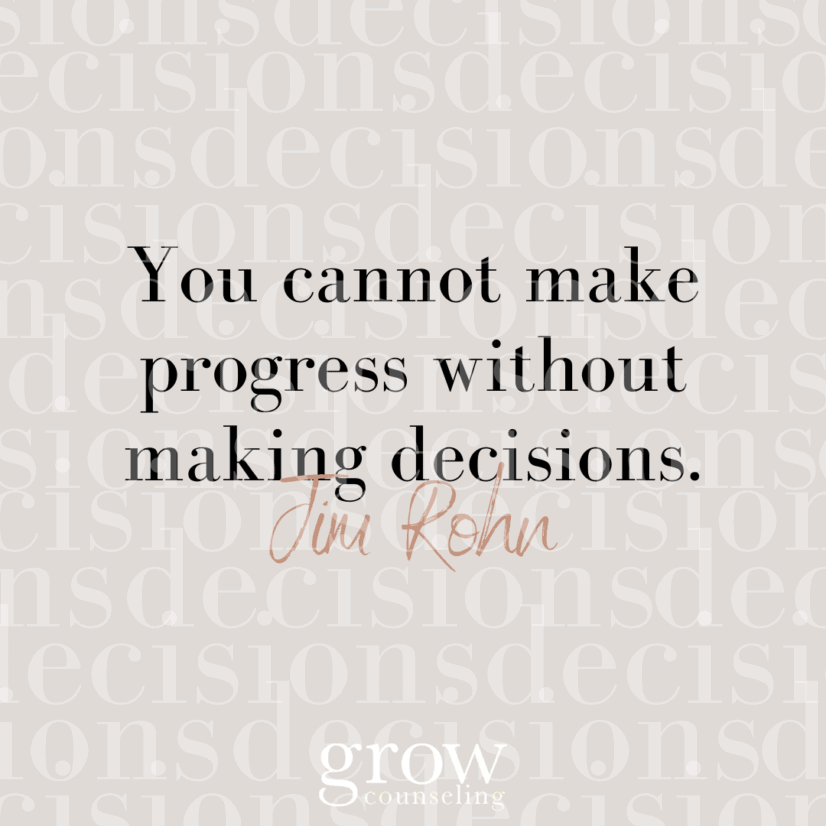You cannot make progress without making decisions.
-Jim Rohn
Decision making is ranked as one of the top anxiety producing actions. Much to the dismay of many, we are inevitably faced with decisions at almost every hour of the day. We decide whether or not to hit snooze, what clothes to wear, what to eat, which route to take to work…the list goes on!
The task of decision making can feel daunting and overwhelming.
While you likely won’t ever avoid the need to make decisions, there are ways to help alleviate some of the anxiety that can often come along with it. I’ll cover techniques and methods in a later blog, but for now, I want to highlight the three main categories of decisions:
- No Stakes. No stakes decisions are minor choices that have no resulting consequence. In simpler terms, there are no right or wrong answers. Deciding whether to wear the black shoes or the brown shoes may seem like a tough choice, but in reality the result often has little value. Far too often we spend a lot of time stressing over no stakes decisions. Can’t decide? Flip a coin! An hour from now, you probably will forget all about it.
- Low Stakes. Low stakes decisions can be a bit trickier, as it can result in a slight consequence if the “wrong” decision is made. The silver lining, however, is that the consequences aren’t earth shattering. Let’s take choosing a new phone for example. You may be thinking about having an iPhone or an Android. Both options have great qualities, and both offer things the other does not. In choosing one, you’re also choosing to give up the features of the other. Is there loss involved? Yes! Will your life be forever altered? Not likely! This type of decision requires more thought than a no stakes decision, but not so much that it needs to take up a substantial amount of your life.
- High Stakes. This type of decision is the only one worth taking up a substantial amount of time, as it can lead to pretty long-lasting consequences. Choosing a career path, for example, is a huge decision that requires a lot of analysis and research to ensure that you’re making the best choice for yourself. With high stakes decisions, it is helpful to consult with others that you trust to get feedback. Although many high stakes decisions aren’t permanent, they often require a lot more effort to change. For this reason, it’s typically best to take your time so that you choose correctly.
Once you identify which category your decision falls under, you can begin the process of making the decision.
If you recognize that you have a no stakes or low stakes decision, don’t stress! Follow the simple guidelines and make the decision. After all, the risk is fairly low and likely won’t dramatically alter your life.
If you recognize that your decision is a bit more high stakes, remember to take your time so that you can choose the option that feels best for you!
Written by: Salima Hart

